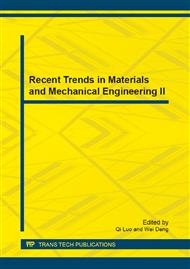p.3
p.9
p.16
p.21
p.30
p.36
p.42
p.47
Application of Fuzzy Structural Analysis for Damage Prediction Considering Uncertain S/N Curve
Abstract:
The paper presents chosen traditional (based on probability theory) and non-traditional (based on possibility theory) computational tools for analysis of the material, geometric or loading uncertainties in mechanical structures. Uncertainties are introduced as bounded possible values intervals or as fuzzy sets, assuming possibility theory and as random parameters in the case of the probability theory. The main goal was to propose numerical algorithms for fuzzy analysis of stochastic oscillated FE model (truss structure) and to predict fuzzy fatigue damage considering fuzzy S/N curve.
Info:
Periodical:
Pages:
21-29
Citation:
Online since:
September 2013
Authors:
Price:
Сopyright:
© 2013 Trans Tech Publications Ltd. All Rights Reserved
Share:
Citation:


